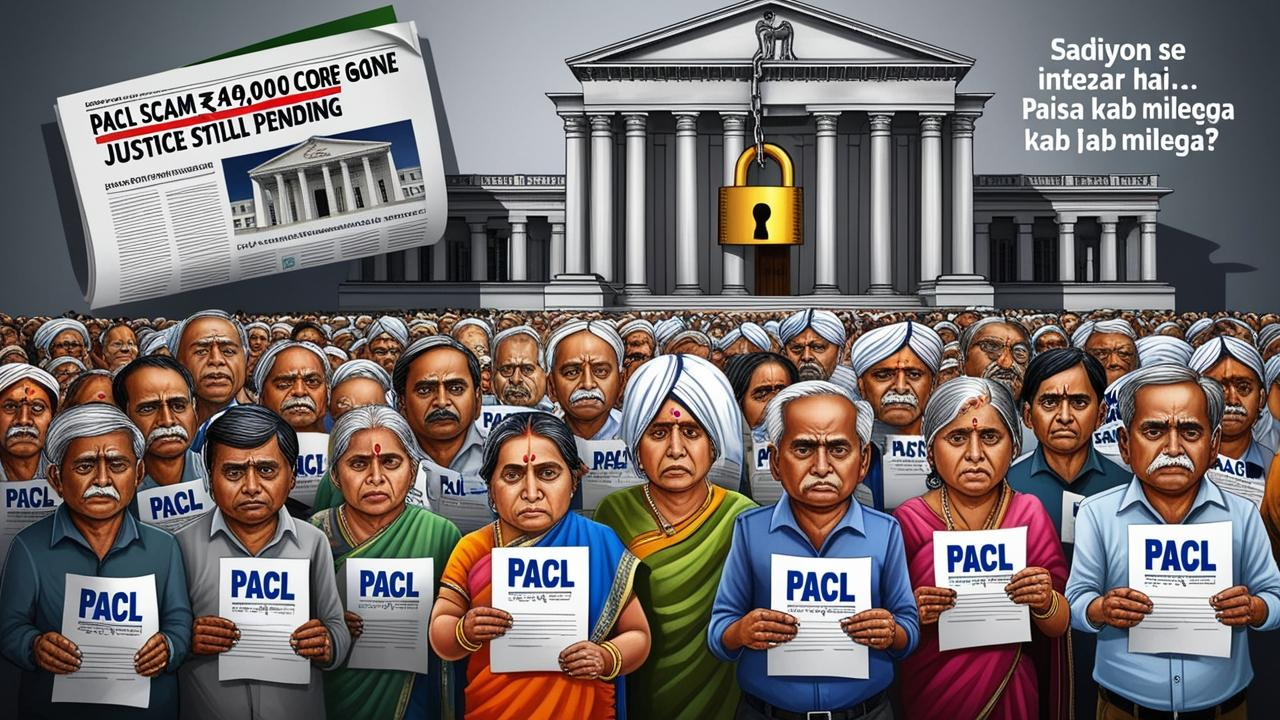It started with hope — and ended with heartbreak for millions of Indians.
People from villages, small towns, and big cities alike were sold a dream by PACL Ltd. A promise that if they invested just a little money, they’d get land or big returns in the future. A few thousand rupees for a better tomorrow. And who doesn’t want that?
But today, even after years of court cases, property seizures, and government announcements, lakhs of families are still wondering: Will we ever get our money back?
Nirmal Singh Bhangoo Is Gone. But the Pain Remains.
When PACL founder Nirmal Singh Bhangoo passed away recently, there was no mourning among investors. Many saw him as the man who cheated over 5.5 crore people out of their hard-earned savings.
Bhangoo’s real estate empire, Pearls Group, had made him a powerful man — owning properties across India and abroad. But it was all built on public trust, and that trust was broken when SEBI declared PACL’s business illegal in 2015, calling it nothing short of a giant Ponzi scheme.
He may no longer be alive. But the question of justice is still very much alive for those he left behind — not just his family, but the millions who lost their savings.
“My Daughter Was Supposed to Get Married With That Money”
I met one such investor, a man named Kishan from Kurukshetra. A retired school teacher, he invested nearly ₹90,000 in PACL over 6 years, hoping to use the return to marry off his daughter and cover post-retirement expenses.
“I didn’t put it in shares. I didn’t gamble. I trusted a land investment scheme because they said I’d get land papers. But till today, I’ve received nothing. Not even a refund of one rupee.”
And he’s not alone. Across Haryana, Punjab, Rajasthan, Bihar, and beyond, countless stories echo the same pain.
Government Took Over the Assets — Then What?
After SEBI ordered the shutdown of PACL, the government took possession of many of its assets — lands, buildings, and offices in places like Mohali, Jaipur, and Bengaluru. These were meant to be liquidated and used to refund investors.
And yes, a committee was formed. Yes, a refund portal was launched:
👉 https://www.sebipaclrefund.co.in/
But since then? Only limited progress.
- Refunds have been issued to investors with claims below ₹19,000.
- Claims above that amount? Still waiting.
- Several PACL properties are still in legal disputes, stuck in red tape.
Investors Ask: “Is the System Sleeping?”
Every time SEBI or the refund committee gives an update, it gives hope — and then silence follows. For people who don’t understand digital systems, who lost their original bond receipts, or made small errors in their refund applications, the system feels unforgiving.
Some common complaints from investors:
- “The portal doesn’t accept my documents.”
- “I got no SMS or email confirmation.”
- “My claim status is stuck on ‘under process’ for years.”
- “What’s the next step? Nobody is telling us anything.”
And now, with the death of Bhangoo, many are worried the case will lose momentum completely.
Where Is the Transparency?
It’s true, the government has taken steps. Some property auctions have happened. A few rounds of refunds have gone through. But there’s still no public timeline for when larger claims will be settled.
Why can’t there be a state-wise or district-wise helpdesk for people struggling with the process? Why is there no detailed online tracker showing real-time updates?
These are questions not just of money, but of trust.
A Call for Justice, Not Sympathy
No one is asking for charity here. Investors simply want their money back. They paid in good faith, they have documentation, and the government has control of the assets.
So, why this long wait?
We’ve seen fast-tracked action in many other financial scams. But in PACL’s case, it feels like investors have been left to fend for themselves. There needs to be a larger public voice, perhaps even a legal movement or PIL to push this matter into the spotlight again.
Final Word: Don’t Let This Scam Fade Into Silence
Nirmal Singh Bhangoo is gone. But for the millions who trusted him — knowingly or unknowingly — the fight isn’t over.
Their savings may still be recoverable. The assets still exist. The process is underway. But what’s missing is urgency and clarity.
Let’s not allow this scam to become just another forgotten news headline. Let’s keep asking the question until it’s answered:
Where is our money, and when will justice be delivered?
